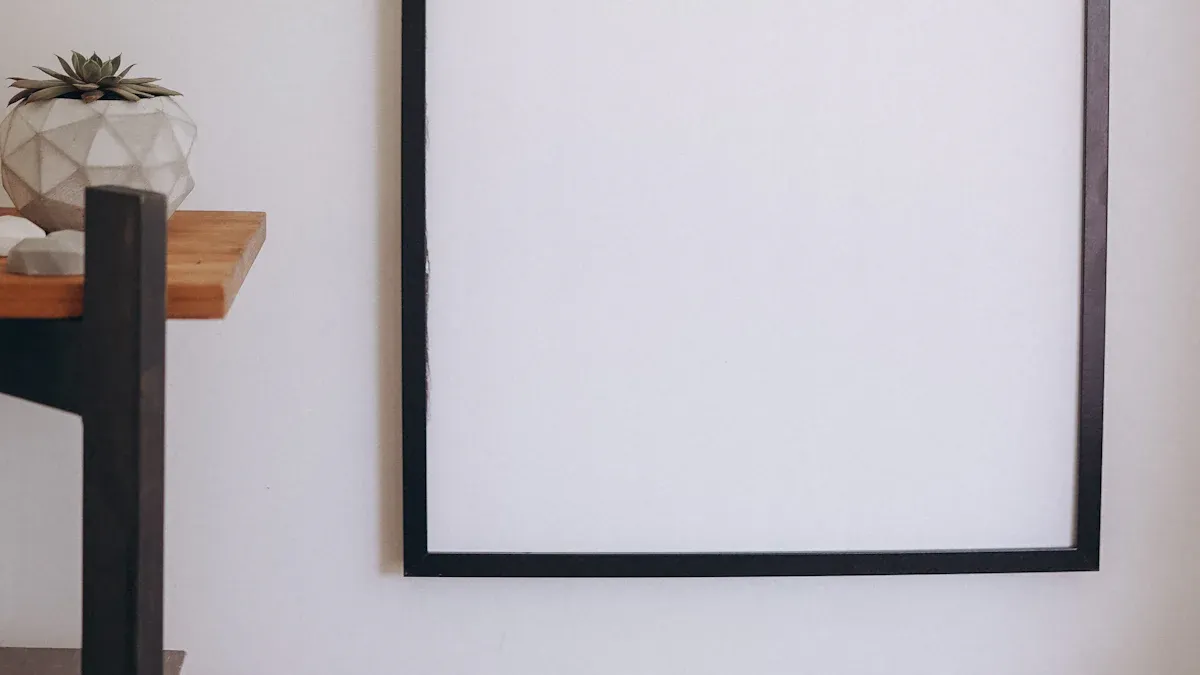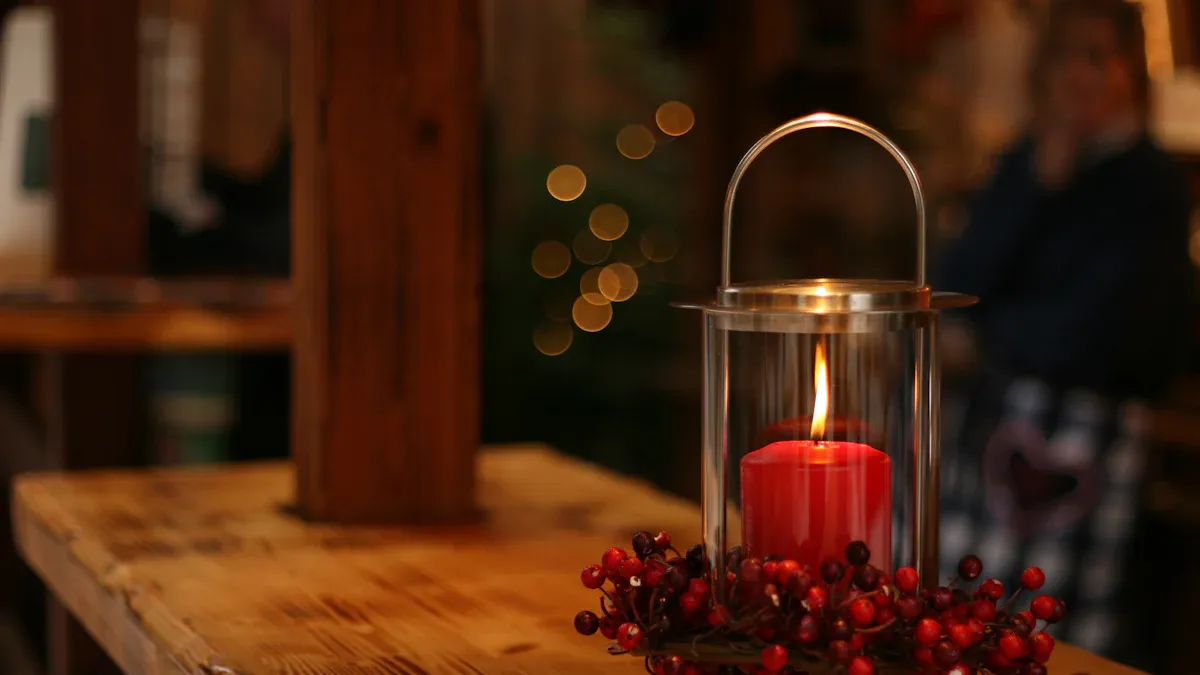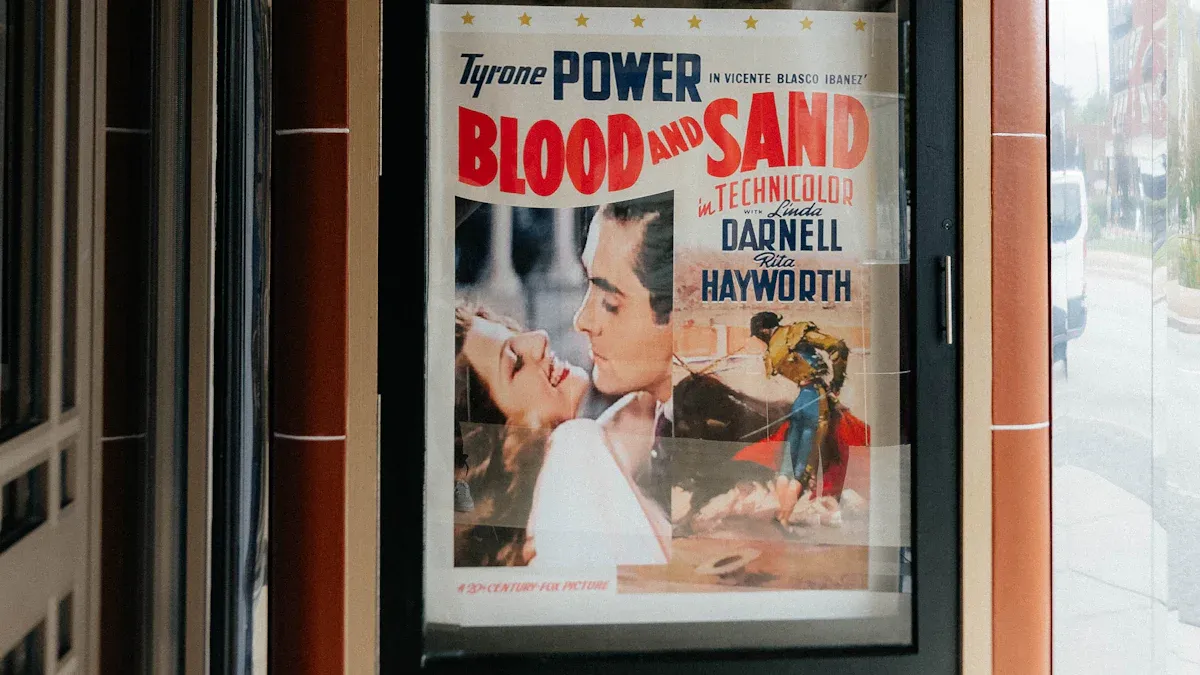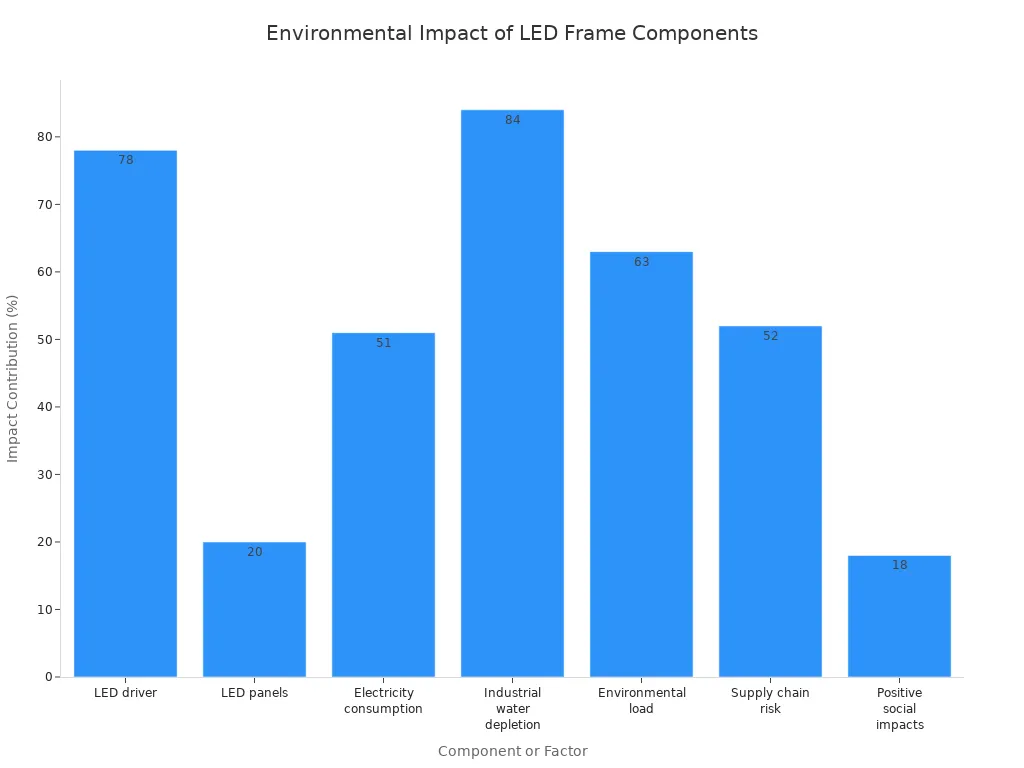Lighted Frames: Types, Applications, and Selection Tips

Have you ever seen a picture look boring in a dark room? It can look much better when you use the right picture light. Lighted frames use special LED picture light to help every picture stand out. When you add a picture light, your picture looks brighter and gets more attention, even if the room is not bright. Many people now use lighted frames at home and at work. The right picture light makes displays look great and saves energy. More people are buying these frames all over the world:
Market Segment | Year | Market Size (USD Billion) | CAGR (%) | Forecast Period |
|---|---|---|---|---|
Light Box | 2024 | 7.5 | 2026-2033 | |
Light Box | 2033 | 5.5 | N/A | N/A |
People choose these frames for many reasons:
The picture light makes pictures brighter and easier to see.
LEDs in picture light last longer and cost less money.
Custom lighted frames help your picture get noticed.
Picking the best picture light and frame type helps your picture look its best.
Key Takeaways
Lighted frames use LED lights to make pictures look brighter. They help pictures stand out, even in dark rooms.
There are many types of lighted frames. These include backlit, edge-lit, fabric SEG, and illuminated snap frames. Each type works best for certain display needs.
Picking the right size, brightness, and color of the picture light is important. This helps your picture look good and fit your space.
LED lighted frames use less energy and last longer. They also protect your pictures better than old lighting options.
You need to take care of your lighted frames and install them right. This keeps them working well and looking nice for a long time.
Lighted Frames Overview
What Are Lighted Frames?
You can find lighted frames in many places. People use them when they want pictures to stand out. These frames have LED light boxes built inside. The lights shine on your picture or graphic. The light can come from behind or from the sides. This makes your display much brighter. It is easier to see pictures in dark rooms.
Lighted frames have more parts than normal frames. Inside, there are LED strips or tubes. They also have acrylic panels that spread the light. Some frames use special fabric. This fabric fits tight and makes graphics look smooth and colorful. Power supplies help the lights work safely. Regular frames do not have these things. They only hold and protect your picture. They do not make it easier to see.
Tip: Use lighted frames if you want your picture to stand out in a dark room.
Key Features
A good light box gives many benefits for your pictures. Here are some things that make the best lighted frames special:
Feature | High-Quality Light Box | Lower-Quality Frames |
|---|---|---|
Uses advanced LEDs for bright, even lighting | Poor or uneven lighting | |
Visibility | Makes your picture and graphic pop | Dull, hard to see in low light |
Display Arrangement | Gives space for each picture and graphic | Crowds displays together |
Maintenance | Needs some care for best results | Easier but less impressive |
Energy Efficiency | Uses less power, lasts longer | May use more energy |
LED light boxes use new technology that saves energy. They last a long time. LEDs can work for up to 50,000 hours. You do not need to change them often. You can control how bright or colorful the lights are. This helps your picture look great anywhere. These frames help you make displays that get noticed. They make your graphics easy to see. A good light box gives you better visibility and quality for every picture.
Types of LED Light Boxes

Backlit Light Boxes
Backlit light boxes use LEDs placed behind your graphic. The lights shine directly through the image, making it look bright and clear. You get even lighting across the whole display. This type works well when you want high brightness and strong colors. You often see backlit light boxes in large displays because they give you the best quality and uniform light.
Here is a table to help you compare backlit light boxes and edge-lit light boxes:
Feature | Edge-lit Light Boxes | Backlit Light Boxes |
|---|---|---|
LED Placement | LED strips along the edges, shining sideways | LEDs across the back panel, shining directly |
Illumination Type | Indirect lighting | Direct lighting |
Thickness/Depth | Ultra-thin, less than 1 inch | 2-4 inches deep |
Brightness | Standard, may be dimmer in center for large sizes | Brighter and more uniform |
Uniformity of Light | May have uneven lighting | Even distribution |
Energy Consumption | Lower energy use | Higher energy use |
Cost | More cost-effective | More costly |
Cabinet Space Required | Less than 1 inch depth | 2-4 inches depth |
Suitable Size Range | Up to 72" W x 120" H | Larger sizes possible |
Tip: Choose backlit light boxes if you need high brightness and want your graphic to stand out in big spaces.
Edge-Lit Light Boxes
Edge-lit light boxes use LED strips along the edges of the frame. The light shines sideways and spreads across the graphic with a special panel. This design gives you a slim and modern look. Edge-lit light boxes use less energy and cost less because they need fewer LEDs. They work best for small to medium displays. You may notice that the center can look a bit dimmer on very large sizes, but for most uses, the light looks even.
You get a thin frame that fits in tight spaces. Edge-lit light boxes are a good choice when you want a sleek display and want to save energy.
Fabric SEG Light Boxes
Fabric SEG light boxes use a special fabric graphic with a silicone edge. You push the edge into a channel around the frame. The LED lights sit inside the frame and shine through the fabric. This type gives you a smooth, bright, and colorful display. You can use fabric SEG light boxes for very large displays, like trade shows or big walls.
Some unique benefits include:
The LED lighting stays safe inside the frame, so it lasts longer.
The fabric is lightweight and easy to fold, making it simple to move and store.
You can set up and take down the frame without tools.
The frame is strong but light, so you can carry it easily.
You can add shelves, spotlights, or connect more frames for custom displays.
Note: Fabric SEG light boxes help you create big, eye-catching displays with easy setup and bright, even light.
Illuminated Snap Frames
Illuminated snap frames use a special snap-open system on all four sides. You can open the frame from the front, change your graphic quickly, and snap it shut again. This makes snap frame light boxes perfect when you need to update your display often. You do not need to take the frame off the wall to change the image.
The snap frame holds your graphic tight and flat. You can use thinner and less expensive graphic materials. Compared to fabric SEG light boxes, illuminated snap frames save you time and effort. You just snap open the frame, swap the graphic, and snap it closed. This system works well for menus, posters, and signs that change often.
Tip: Use illuminated snap frames if you want fast and easy graphic changes with bright, even lighting.
Light Box Displays in Use

Retail and Advertising
You can find light box displays in many stores and ads. Stores use them to help people see products better. These displays make customers want to come inside. Backlit light boxes and illuminated snap frames work well for big ads and checkout areas. They help your pictures stand out, even if the store is dark or crowded. Studies say lighted frames can bring in 17% more people. The bright lights make your products and signs easy to notice. You can change the pictures fast, so your ads always look new and work well.
Tip: Put light box displays near doors or shelves to show off sales and new items.
Art and Galleries
Art galleries and museums use light box displays to show art in the best way. Edge-lit and backlit light boxes give even light, so colors and details look great. You can change how bright the light is to keep art safe. These displays help people see every part of the art, even in dark rooms. Good lighting shows the real beauty of each piece and makes visits special.
Home Decor
Light box displays make homes look nice and work well. Many people pick LED picture lights because they save energy and stay cool. You can choose hardwired, plug-in, or battery frames. This lets you pick what works best for your room. LED lights keep your art safe by making less heat and blocking UV. You can also change the color and brightness, so your pictures always look good. Pick a frame style and color that matches your room for a neat look.
Events and Exhibitions
People use light box displays at events to make booths stand out. Fabric SEG light boxes and backlit frames are good for big trade show displays. You can use LED lights to light up panels, pictures, and logos. These displays make spaces bright and friendly, so more people visit. They are easy to set up and save energy, which is good for busy events. Good lighting helps people see your booth and makes your brand easy to remember.
Note: Light box displays are used in many places like stores, hotels, hospitals, shows, schools, and airports. New trends include using LED lights, digital screens, and earth-friendly materials.
Choosing a Picture Light or Frame
Selecting the right picture light and frame can make your picture stand out and last longer. You want your display to look great, save energy, and fit your space. Follow these steps to make the best choice for your needs.
Size and Placement
Picking the right size and finding the best spot for your picture light is important. You want your picture to look balanced and easy to see. Here is a step-by-step guide to help you:
Measure your wall and the space where you want to hang your picture.
Think about the layout of the room and how much space you have.
Decide what message or feeling you want your picture to give.
Pick a size that is big enough to see but not too large for the room.
Look for a spot with good visibility and no obstructions.
Check the lighting in the room. Make sure your picture light will add enough brightness.
Adjust the height and angle so people can see your picture clearly.
Choose a frame style and mounting method that fits your space.
Test the placement before you finish installing a picture light.
Tip: If you wonder where to hang a picture light, place it so the light shines evenly across the whole picture without causing glare.
Brightness and Color
The brightness and color of your picture light change how your picture looks. You want your picture to show its true colors and details. Here are some things to think about:
A good picture light brings out textures and colors that you might miss in normal light.
You can adjust the brightness to match the room’s light. This helps your picture look its best at any time of day.
Warm white light makes reds and yellows in your picture look richer. Cool white light brings out blues and greens.
The right color temperature sets the mood and makes your picture more interesting.
Adjustable settings let you change the brightness and color to fit your picture and your room.
Note: Try different settings to see which brightness and color make your picture look the best.
Installation and Maintenance
Installing a picture light the right way keeps your picture safe and your display looking sharp. Good installation and care also help your picture light last longer.
Make sure all electrical connections are tight and safe.
Use high-quality LED drivers and wires to avoid problems like flickering or buzzing.
Clean your picture light and frame with a soft cloth. Do not use harsh chemicals.
Check your picture light often for any signs of wear or damage.
Use UV-resistant materials to keep your picture from fading.
If you see flickering or hot spots, check the wiring and try moving the LEDs or upgrading the diffuser.
Good ventilation helps your picture light stay cool and last longer.
Always follow the instructions from the manufacturer.
Tip: In rental homes, hiding wires is important. You can use wire chases or choose battery-powered picture lights for easy setup.
Energy Efficiency and Budget
You want a picture light that saves energy and money but still gives you great quality. LED light boxes use less power and last much longer than old fluorescent frames. Look at this table to compare:
Aspect | Fluorescent Lighted Frames | LED Light Boxes |
|---|---|---|
Higher; baseline | About 50% less energy consumption | |
Energy Cost Savings | Baseline | 40% to 60% savings on energy costs |
Lifespan | 10,000 to 15,000 hours | 35,000 to 50,000 hours |
Upfront Cost | Lower initial cost | Higher initial cost |
Maintenance Cost | Higher due to frequent replacements | Lower due to longer lifespan |
Payback Period | N/A | Approximately 2-3 years |
Lighting Quality | Standard fluorescent lighting | Better quality, clearer and vibrant light |
Environmental Impact | Contains mercury; higher emissions | No mercury; reduced carbon emissions |
LED picture lights cost more at first, but you save money over time because they use less energy and last longer. You also help the environment by choosing LEDs, which do not have mercury and create less pollution.

When you pick a picture light, think about your budget, how often you want to change the display, and if you need a hardwired or battery-powered option. Some people buy used light boxes from theaters to save money. If you want a clean look, choose a hardwired picture light and hide the wires. For easy setup, battery-powered picture lights work well.
Note: Recycling LED picture lights is hard because they have many different parts. Try to use your picture light for as long as possible and look for recycling programs when you need to replace it.
Troubleshooting Lighted Frames
Common Issues
Lighted frames can sometimes have problems that affect how they work. You might notice flickering, buzzing, or dim lights. These issues often come from wiring, power supply, or the type of LED used. Knowing what to look for helps you fix problems quickly.
Common Issue | What You Can Do |
|---|---|
Flickering lights | Check if the LED driver matches the bulb. Replace if needed. Make sure you do not use an incompatible dimmer. Call an electrician if the problem stays. |
Buzzing or humming noises | Look for loose wires. Check if the driver has the right wattage. Replace any bad parts. Ask a professional if the noise continues. |
Dim or weak light | Make sure the power supply is strong enough. Use good quality LEDs. Check for old or weak wires. |
Overheating | Use LEDs with good heat sinks. Keep the frame in a cool spot. Make sure air can flow around the frame. |
Loose electrical connections | Tighten all wires. Look for any damage. Secure connections to stop flickering or noise. |
Wrong color in RGB LEDs | Check the wiring. Do not mix brands. Make sure the power supply can handle the load. |
Incompatible LED drivers | Use drivers that match your LEDs. Avoid mixing brands or using the wrong dimmer. Replace drivers if needed. |
Early failure of non-replaceable LEDs | Pick LEDs with a good warranty. Choose frames with replaceable lights. Buy higher quality products. |
Tip: If you see a problem you cannot fix, always ask a professional for help. Safety comes first.
Maintenance Tips
You can keep your lighted frames working well by following a few simple steps. Regular care helps prevent most problems and keeps your display looking bright.
Clean the outside and diffuser with a soft, lint-free cloth every week. This keeps the light clear and bright.
Check for dust and make sure air can flow around the frame. Good ventilation stops overheating.
Inspect all wires and connections weekly. Tighten any loose parts to avoid flickering or buzzing.
Look inside the frame each month. Check the LED panels and power supply for signs of wear or damage.
Clean the inside parts, especially reflective surfaces, every month for the best light output.
Test all controls and dimmers every three months. Make sure everything works as it should.
Replace any worn or broken parts once a year. This keeps your frame safe and reliable.
Adjust the brightness and color settings yearly to keep your display looking its best.
Always follow the instructions from the manufacturer. Use the right tools for each job.
Keep a record of your maintenance. This helps you spot patterns and fix problems early.
Use voltage stabilizers or surge protectors to protect your frame from power spikes.
Keep your frame away from heat sources and direct sunlight.
If you have a complex setup, consider hiring a professional for regular service.
Note: Good maintenance saves you money and keeps your lighted frames shining bright for years.
You can change how a room looks with the right picture light. Picking a picture light helps your picture stand out and shows details. Different picture lights work best for different displays and rooms. Make sure your picture light is bright and fits your picture’s size. Try using a picture light that lets you change the settings. Put your picture light above your picture for the best look. A good picture light helps colors and textures show up. You can use a picture light at home, in galleries, or at events. The right picture light makes your display look neat and professional. Using a picture light saves energy and keeps your picture safe. Always pick a picture light that matches your picture and style. Look at different picture lights or ask someone for help to find the best one for your display.
FAQ
How do you clean a lighted frame?
Use a soft, dry cloth to wipe the frame and cover. Avoid water or harsh cleaners. Dust the LEDs gently. If you see smudges, use a damp cloth with mild soap. Always unplug the frame before cleaning.
Can you replace the LEDs in a lighted frame?
Some frames let you replace the LEDs. Others have built-in lights that you cannot change. Check your frame’s manual. If you cannot replace the LEDs, you may need a new frame when the lights stop working.
What size lighted frame should you choose?
Pick a frame that matches your picture or graphic size. Measure your artwork first. Choose a frame that leaves a small border around the image. Make sure the frame fits the wall space and does not look too big or too small.
Are LED light boxes safe to use at home?
Yes, LED light boxes are safe. They do not get very hot. They use less power than old lights. Most have safety features to prevent overheating. Always follow the instructions and keep the frame away from water.
See Also
Choosing Acrylic Light Boxes: Uses, Advantages, And Guidance
Exploring Acrylic Photo Light Boxes: Varieties And Creative Uses
Acrylic LED Light Boxes Explained: Varieties, Uses, And Setup
Framed Versus Frameless Acrylic LED Light Boxes For Spaces
Understanding Acrylic Light Panels: Varieties, Uses, And Setup

